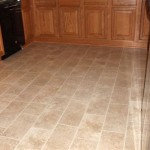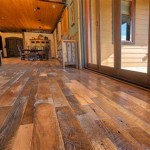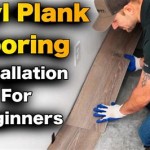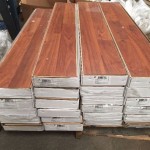How to Fix Broken Floor Joists: A Comprehensive Guide
Floor joists are critical structural elements that support the weight of a floor, its occupants, and any furniture placed upon it. When these joists become damaged, it can lead to sagging floors, creaking noises, and, in severe cases, structural instability. Identifying and addressing broken or weakened floor joists is essential for maintaining the integrity and safety of a building. This article provides a detailed guide on how to assess, repair, and reinforce broken floor joists.
Before undertaking any repair work, it is crucial to understand the common causes of floor joist damage. Moisture is a frequent culprit, leading to wood rot and decay. Leaks from plumbing, roof issues, or inadequate ventilation in crawl spaces can create a damp environment conducive to fungal growth. Insect infestations, particularly termites and carpenter ants, can also significantly weaken wood joists by tunneling through them and compromising their structural integrity. Additionally, overloading the floor with excessive weight or improper construction practices during the initial building phase can contribute to joist failure.
Proper assessment is paramount to determine the extent of the damage and the appropriate repair strategy. Begin by visually inspecting the floor for signs of sagging, unevenness, or excessive deflection. Pay close attention to areas where plumbing or electrical lines penetrate the floor. Use a level to check for any dips or rises in the floor surface. Next, access the floor joists from below, typically through a crawl space or basement. Carefully examine each joist for cracks, splits, rot, insect damage, and any signs of water staining. A screwdriver or awl can be used to probe the wood to assess its soundness. If the tool penetrates easily, it indicates decay. Document the location and severity of the damage to develop a comprehensive repair plan.
Determining When to Repair vs. Replace
The decision to repair or replace a broken floor joist depends on the severity and extent of the damage. Minor cracks, surface rot, or small insect infestations may be effectively addressed with repair techniques, such as sistering or epoxy consolidation. However, if the joist is severely rotted, significantly cracked across a large portion of its span, or extensively damaged by insects, replacement may be the only viable option. Consider the overall structural integrity of the joist when making this determination. If the damage compromises more than 40% of the wood's cross-sectional area, replacement is generally recommended.
Furthermore, take into account the accessibility of the joist. If the joist is located in a difficult-to-reach area or requires significant demolition to access, the labor costs associated with replacement may outweigh the benefits. In such cases, carefully evaluate the long-term implications of each option, considering factors such as the lifespan of the repair and the potential for future problems.
Consulting with a qualified structural engineer or experienced contractor is advisable, particularly when dealing with extensive damage or when unsure about the appropriate course of action. These professionals can provide expert assessment and guidance, ensuring that the repair or replacement is performed safely and effectively.
Sistering a Floor Joist: A Step-by-Step Guide
Sistering is a technique used to strengthen a weakened or damaged floor joist by attaching a new joist alongside the existing one. This method is suitable for repairing minor to moderate damage and can significantly increase the load-bearing capacity of the floor. The following steps outline the process of sistering a floor joist:
- Preparation: Begin by gathering the necessary materials and tools. This includes a new joist of the same dimensions and material as the existing one, construction adhesive, wood screws or nails, a drill or nail gun, a level, a measuring tape, a saw, and safety glasses. Ensure that the new joist is free from defects and is properly treated to prevent future decay or insect infestation.
- Support the Existing Joist: Before proceeding with the repair, it is essential to provide temporary support to the existing joist. This can be achieved by using adjustable jack posts positioned beneath the joist to lift it slightly and relieve any stress. Ensure that the jack posts are placed on a solid foundation and are properly secured to prevent them from shifting during the repair process.
- Prepare the New Joist: Cut the new joist to the required length, ensuring that it spans the entire length of the damaged section and extends at least 2-3 feet beyond on either side. This overlap provides adequate support and ensures that the load is distributed evenly. If necessary, notch the new joist to accommodate any plumbing or electrical lines.
- Apply Construction Adhesive: Apply a generous bead of construction adhesive to the side of the existing joist where the new joist will be attached. This adhesive provides an additional bond between the two joists and helps to distribute the load more effectively.
- Attach the New Joist: Position the new joist alongside the existing one, ensuring that it is flush and level. Use clamps to hold the joists together securely. Then, using a drill or nail gun, fasten the new joist to the existing one with wood screws or nails. Space the fasteners approximately 12 inches apart along the entire length of the joist. Be sure to use fasteners that are long enough to penetrate deeply into both joists.
- Reinforce with Blocking: To further strengthen the repair, install blocking between the sistered joists at regular intervals. Blocking consists of short pieces of wood that are cut to fit snugly between the joists and are fastened in place with screws or nails. This helps to prevent the joists from twisting or buckling under load.
- Remove Temporary Supports: Once the adhesive has cured and the fasteners are securely in place, carefully remove the temporary support from beneath the joist. Inspect the repair to ensure that it is stable and secure.
- Address the Cause of the Damage: Finally, it is important to address the underlying cause of the damage to prevent future problems. This may involve repairing plumbing leaks, improving ventilation in the crawl space, or treating the area for insects.
Replacing a Floor Joist: A Detailed Procedure
Replacing a floor joist is a more involved process than sistering but is necessary when the joist is severely damaged. This procedure requires careful planning and execution to ensure the structural integrity of the floor is maintained. The following steps outline the process of replacing a floor joist:
- Preparation: Gather the necessary materials and tools, including a new joist of the same dimensions and material as the existing one, construction adhesive, wood screws or nails, a drill or nail gun, a level, a measuring tape, a saw (including a reciprocating saw), safety glasses, and shims. Ensure the new joist is properly treated.
- Support Adjacent Joists: Before removing the damaged joist, provide temporary support to the adjacent joists. This can be achieved by constructing temporary support walls on either side of the joist to be replaced. These support walls should be securely braced and capable of bearing the load previously supported by the damaged joist.
- Remove Obstructions: Identify and remove any obstructions that may prevent the removal of the damaged joist. This may include plumbing pipes, electrical wiring, or ductwork. Exercise caution when working around these utilities and consult with a qualified professional if necessary.
- Cut the Damaged Joist: Using a reciprocating saw, carefully cut the damaged joist at each end, near where it rests on the supporting walls or beams. Take care not to damage the adjacent joists or the supporting structures.
- Remove the Damaged Joist: Once the joist has been cut, carefully remove it from the floor assembly. If the joist is tightly fitted, you may need to gently pry it loose using a pry bar.
- Prepare the New Joist: If necessary, modify the new joist to fit the existing floor assembly. This may involve notching the joist to accommodate plumbing or electrical lines, or trimming it to the correct length.
- Install the New Joist: Carefully slide the new joist into place, ensuring that it is properly aligned with the adjacent joists. Use shims to level the joist if necessary.
- Secure the New Joist: Attach the new joist to the supporting walls or beams using appropriate fasteners, such as wood screws or nails. Ensure that the fasteners are long enough to penetrate deeply into both the joist and the supporting structure. Apply construction adhesive to the ends of the joist before fastening it in place to provide a stronger bond.
- Reinforce with Blocking: Install blocking between the new joist and the adjacent joists to provide additional support and prevent twisting or buckling.
- Remove Temporary Supports: Once the new joist is securely in place and the adhesive has cured, carefully remove the temporary support walls. Inspect the repair to ensure that it is stable and secure.
- Reinstall Obstructions: Reinstall any plumbing pipes, electrical wiring, or ductwork that were removed during the repair process, ensuring that they are properly secured and protected.
When working with floor joists, safety should be the paramount concern. Always wear safety glasses to protect your eyes from flying debris. Use gloves to protect your hands from splinters and sharp edges. When working in crawl spaces or basements, ensure adequate ventilation to prevent the accumulation of harmful gases or dust. Use proper lifting techniques to avoid back injuries. If working with power tools, follow the manufacturer's instructions carefully and wear appropriate safety gear, such as ear protection.
Furthermore, it is crucial to obtain any necessary permits before undertaking floor joist repairs or replacements. Building codes and regulations vary by location, and failure to comply with these requirements can result in fines or other penalties. Contact your local building department to determine the specific requirements for your project.
Repairing or replacing broken floor joists is a complex task that requires careful planning, execution, and attention to detail. By following the guidelines outlined in this article, homeowners can effectively address floor joist damage and maintain the structural integrity and safety of their homes. When in doubt, consult with a qualified professional to ensure that the repair or replacement is performed safely and effectively.

Fix Replace Damaged Floor Joists How To Sister A Joist

How To Fix A Broken Joist

How To Repair A Butchered Floor Joist Fine Homebuilding

Fixing A Broken Floor Joist

How To Fix Sagging Floor Joists Rogue Engineer

Sistering A Damaged Floor Joist

How To Repair Sagging Sloping Floors Part 2

Everything You Need To Know About Floor Joist Repair

Floor Joists Common Problems And Joist Repairs

How To Repair Cut Or Damaged Floor Joist Bolting New Existing
See Also







